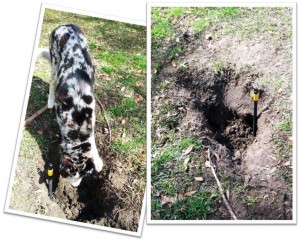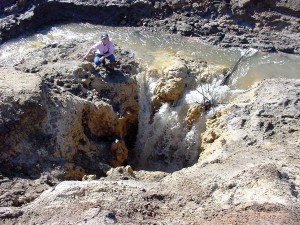Looking Out for Horseshoe Crabs
Spring is here and that can only mean one thing, horseshoe crabs! That’s right it’s horseshoe crab survey time!
Each spring the scientists with the Florida Fish & Wildlife Conservation Commission (FWC) look for volunteers to report horseshoe crab sightings around the state as part of their annual horseshoe crab survey.
So, if you would like to be part of the research team, all you need to do is get out and walk along the beach and let FWC researchers know when you see horseshoe crabs. Please see the information at the end of this article for submission information. The following is some background information on horseshoe crabs.
About Horseshoe Crabs
- The horseshoe crab is found on shores of the western Atlantic Ocean ranging from Maine to Mexico. Fossils of horseshoe crab ancestors show that these animals have been around for over 350 million years – before the age of dinosaurs. Therefore, it is no surprise that scientists typically refer to horseshoe crabs as “living fossils.”
- Interestingly, horseshoe crabs are not really crabs at all! As it turns out, they are more closely related to spiders and scorpions than they are to true crabs. This is because unlike true crabs, horseshoe crabs do not have antennae or jaws, and their legs are similar to those found on spiders.
- Currently, horseshoe crabs are being harvested commercially for three purposes in the United States: bait (conch & eel fisheries); marine life (aquarium trade, research, etc.); and biomedical (for blood).
- Compared to other states, especially along the Atlantic coast, Florida does not have a large horseshoe crab fishery. The primary harvest in Florida is for marine life.
- Horseshoe crabs are ecologically important. During certain times of the year, horseshoe crabs lay billions of eggs on beaches. These eggs are an important food source for migrating birds and the marine wildlife.
- Horseshoe crabs are also directly important to humans because research on their compound eyes has lead to a better understanding of the human visual system.
- In addition, horseshoe crab blood is widely used by the biomedical industry. Special cells in their blood (which by the way is blue) are used to test for bacterial contamination in our blood supplies and in the production of many commercial drugs. A horseshoe crab’s blood contains hemocyanin, a copper – based molecule that gives it a blue color.
- Finally, the material that makes up their exoskeleton (chiton) is used to make contact lenses, skin creams, and hair sprays.

The blood of the horseshoe crab is blue because it is copper-based.
Credit: FL Fish & Wildlife Commission
Horseshoe Crab Anatomy
- The tail of the horseshoe crab is often thought to be a weapon by many people. However, the horseshoe crab is actually harmless and the tail is used to dig through sand and to turn the crab upright if it is accidentally turned over.
- The first pair of legs can be used to distinguish between males and females. Males use their specialized front legs, called claspers, to hold on to the female during spawning.
Project Objectives and Goals
Currently, horseshoe crabs are being over-harvested in some states. The management plan issued by the Atlantic States Marine Fisheries Commission requires that all Atlantic coastal states must identify horseshoe crab spawning beaches.
With your help! – FWC’s goal is to identify horseshoe crab spawning beaches around Florida.
How can you help?
FWC is asking the public to report sightings of horseshoe crab activities. The information that the researchers would like to collect from you is the following:
- Date and time of your sighting.
- Location of your sighting.
- Whether or not horseshoe crabs were spawning.
- A rough estimate of the number of horseshoe crabs seen.
Spawning behavior of horseshoe crabs is best observed within three-days before and after a full or new moon on sandy beaches with low wave action.
If you want to be more involved, you can contact the FWC researchers about collecting data on abundance of male and female horseshoe crabs, and on sizes of individuals. You can contact FWC using any of the following methods:
Go to MyFWC.com/Contact and click on the “Submit a Horseshoe Crab Survey” link, then “Florida Horseshoe Crab Spawning Beach Survey,” or go directly to http://www.surveymonkey.com/s/horseshoe_crab
- You can also report findings via email at horseshoe@MyFWC.com
- Or call toll-free at 1-866-252-9326
If you have any questions please let me know. Enjoy your beach walks and “crab” watching.
(Bill Mahan is a FL Sea Grant Agent and Director of the Franklin UF-IFAS Extension Program. Contact him at (850) 653-9337, 697-2112 x 360; via e-mail at bmahan@ufl.edu; or Facebook http://www.facebook.com/UFIFASFranklinExtension





